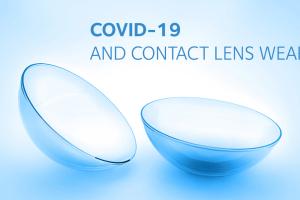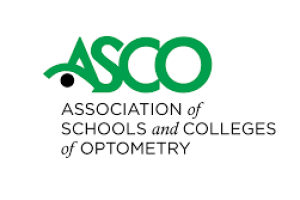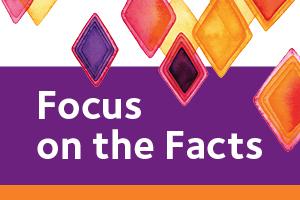
While 2020 was a challenging year in our practices, one thing we have learned as we enter 2021 is that the contact lens category has remained essential during COVID-19. Contact lens wearers may have reduced wear temporarily during the spring of 2020, but these reasons tend to be temporary, and our patients are wearing their lenses more than before.1
Before COVID-19, contact lens wearers were wearing their lenses an average of 20.4 days, and this dipped to 16.1 days from April-June. Many of these reasons were temporary, including patients wanting to give their eyes a break, or needing them for activities they were not doing (work, socializing, sports). Interestingly, only 15 percent of patients in August said they weren’t wearing them because they were worried about COVID and hygiene (down from 31% in June) and only 10% claimed cost for the reason.2
In July and August, wearing days increased to 22.2 days on average per month. What could be the reason for this increase? Many patients were starting to return to normal activities, gyms were opening up, patients were socializing more and kids were returning to sports.2 Patients also remark to me they prefer to wear their contact lenses with a mask to reduce fogging! We have also made a point to increase our communication with patients about healthy contact lens wear to make sure they continue to feel safe while wearing them.2
As we know the world has changed, we also have changed in our buying behavior. Online shopping and delivery really increased during COVID, which we also saw in our offices. Before COVID, only 20% of contact lenses were purchased online3, but that increased significantly. Almost 70% of online buyers may not go back to purchasing their contact lenses in person3, and 88% of patients prefer to get their contact lenses delivered home4. Our office was closed for routine care for 8 weeks, and virtually all of our revenue during that time was direct shipping of contact lenses.
What can we as ECP’s learn from this? First, if we are not direct shipping contact lenses home, this is the time to start. In our office, we used to ask “would you like your annual supply shipped home or office?” Now we just let them know we are shipping their supply directly to their doorstep, no extra trip required. The value and convenience that this provides our patients is extremely important. This also is a great way to make your offices more efficient. For every contact lens order you place and have delivered to your office, the number of touch points and staff members involved in that transaction and dispense is surprising. At a time when we are trying to make processes quicker and limit patient encounters, direct shipping is a huge win. Also, having the ability for patients to order directly from your website (and ship home) is another value-added service that also increases patient satisfaction. Subscription services such as LensFerry™ keep patients engaged and reminds them when it is time to order lenses and schedule their exams. By keeping contact lens sales in our offices, we keep patients compliant and returning to our offices for care.
With health and safety on everyone’s mind, this is a great time to bring up contact lens safety and hygiene in the exam room. Shockingly, 20% of contact lens wearers replace their cases annually5, 5% have shared their cases5, 52% of wearers use tap water to clean their cases5, 20% don’t clean their cases at all5, and only 4% of patients report full compliance for cleaning6. I will ask my reusable lens wearers to bring their cases in so we can inspect them, and many are shocked at how dirty they are when compared to a clean case. This visual is a great way to educate, but also to transition the conversation to other lens technologies such as daily disposables that might be easier for them and more hygienic.
With such a focus on health, now is the time to have a conversation with your patients about 1-day silicone hydrogel lenses. I talk to my patients about safety with contact lens wear and ask them what their routine is when they return home after being out for the day- most report washing their hands and showering right away. I ask them, but what about your contact lenses? You are continuing to wear the same pair day after day (and we know they are likely not cleaning them properly). I then talk about the convenience and ocular health benefits of being able to throw that lens away, and put on a fresh, clean pair in the morning. With our practice already having a success rate of over 85% of patients wearing daily disposables, with these conversations focused even more on health and hygiene, we are seeing that number continue to climb.
We also know that many of patients are working from home, or doing remote schooling, and may be wearing their lenses longer days. With silicone hydrogel lenses, I know my patients are getting a better lens experience. With a significant portion of our patients admitting that they nap (75%) in their lenses7, or even sleep overnight in them (27%)7, making sure they are wearing the healthiest lens possible keeps their eyes safe.
How have we been able to implement these changes in our office? We are upgrading a significant number of our patients to 1 day SiHy lenses, including those in 1-day hydrogels, weekly/monthly hydrogel and weekly/monthly SiHy.
clariti® 1 day is my “workhorse” lens, and we have tremendous success in our office due to the naturally wettable lens that is comfortable, clear and easy to handle. I can be confident my patients’ eyes are healthy knowing that the clariti® 1 day has up to 3x the Dk/t of some of the leading hydrogel lenses. With a full family, including sphere, toric and multifocal lenses, I don’t worry that patients will have to be refit if their prescription changes. The toric design is extremely stable, and the multifocal lens is easy to fit and takes minimal chair time.
MyDay® is my high performance lens, with all day comfort, easy handling, a high Dk/t (100), excellent optics and versatile with a soft, low modulus. The MyDay® toric also delivers excellent stability with consistent, clear vision.
When looking at how to streamline our exams, and move patients through our office quicker, OptiExpert® has been a fantastic addition to our office. In our office, our scribes use OptiExpert® to select the right toric or multifocal lens for a patient, and have that lens ready for the patient after our slit lamp exam. We also find we have less patients returning for contact lens exams as they are more successful in their first fit. In a time where we want to be extremely efficient, OptiExpert® can significantly reduce chair time and return visits.
While COVID-19 has proven to be a challenging time in our offices, it has also shown us the true value of our contact lens patients. Their wearing habits may have changed slightly, but they are resilient and showing us they want to wear their contact lenses more than ever. We must adapt to these changing times by offering shipment of contact lenses, online ordering through our websites, and offering our patients the healthiest, safest lenses available.
Jennifer Stewart, OD is a partner at Norwalk Eye Care, a 2018 Coopervision Best Practices Award Winner. She is also the Chief Vision Officer at Performance 20/20, a sports and performance vision training facility in Stamford, Conn. She can be contacted at jen.stewart@perform2020.com.
References
CVI data on file 2020. Covid-19 contact lens users survey, Verve, April 2020. A1, A8, A17. Base (all respondents): Total US: n=240
CVI data on file 2020. Covid-19 contact lens users survey, Verve, Aug 2020.
The Vision Council Research. VisionWatch Internet Influence Report
Coopervision COVID Consumer Pulse Survey, US Market
Morgan, B&L European Study 2007: n=3771
Morgan P et al. An International analysis of contact lens compliance. CLAE 2011: 34:223-228
Dumbleton KA, Richter D, et al. A multi-country assessment of compliance with daily disposable contact lens wear. Cont Lens Anterior Eye. 2013 Dec;36(6):304-12.








